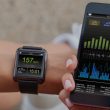What will they think of next?
Radio frequency identification technology isn’t just being used to keep track of products and secure U.S. borders. Here are just a few of the more creative uses for RFID currently being contemplated:
Digital Angel recently received a U.S. patent for its Bio-Thermo microchip, an injectable, RFID-based device used to wirelessly monitor bird flocks, domestic animals and livestock.
The patent covers a glass-encapsulated passive transponder, sensor and integrated circuit device that operates within a frequency range of 125 kHz to 134.2 kHz. It is about the size of a grain of rice and is implanted under the animal’s skin, usually between the shoulder blades, to determine body temperature.
Zeke Mejia, Digital Angel’s chief technology officer, said it is currently being marketed for the early detection of infectious diseases in animals, such as the avian flu in poultry and hoof-and-mouth disease in cattle stocks. For example, the company partnered with the Brazilian Agriculture Research Corp. in April to develop a joint pilot program to fight the latter. One hundred seventy-five cattle were injected with the RFID tag and monitored under the National Livestock Identification Program. An RFID reader was used to activate the passive chip and acquire the data, Mejia said. Users scanned cattle with the reader to capture vital information, including the identity of the animal, its age, its medical history, its contacts with other animals and its overall health. Owners used the technology to determine whether an animal had a temperature or was at risk from an infectious disease.
“They won’t have to sacrifice the chicken or cattle before they know whether the animal is infected,” he said.
The product is commercially available for use in animals. Although Mejia believes the product could be used in humans and poses little risk based on its current deployments, it has not been tested on, or approved for, human subjects.
A team of researchers at the National Institute of Standards and Technology (NIST), a federal agency based in Gaithersburg, Md., has spent the last year studying whether RFID technology can be used to track firefighters inside buildings and help them navigate under hazardous conditions.
The RFID-Assisted Localization and Communication for First Responders project is determining the feasibility of using RFID-assisted localization, in combination with wireless communication networks, to track first responders in stressed indoor RF environments, instead of using GPS-based localization and external communication systems, which can be unreliable, said Len Miller, NIST electrical engineer and lead researcher.
Specifically, Miller’s team is determining whether RFID tags placed in buildings can pinpoint the location of first responders. These tags would have serial numbers with location information and other critical building and occupant data. First responders would access the information through hand-held, ruggedized RFID readers with a built-in navigation unit, which is still in the concept phase. The hope is that through using the readers, first responders can navigate seamlessly throughout the building, and personal-safety officers can track their location from outside.
“We are definitely still in the R&D phase, learning what the technology can do with the help of a multidisciplinary team of engineering, fire research and electronics experts,” Miller said.
For the next year, the team will determine the amount of tags needed and where they should be located in buildings, develop a ruggedized reader and find ways to integrate the reader into a wireless network that can relay firefighters’ positions to incident commanders. Interested first responder agencies can access the research data on the agency’s Web site (www.nist.gov). The agency also is seeking partners interested in developing a prototype or field-testing the technology, Miller said.
Applied Digital Solution CEO Scott Silverman recently came under fire for his public statements suggesting the U.S. government use the company’s implantable RFID-based, human-tracking device — developed by its VeriChip subsidiary — as a way to identify immigrants and guest workers. Silverman made the statements on FOX News’ “Fox & Friends” in response to questions about the Bush administration’s call to Congress to pass comprehensive immigration reform.
VeriChip offers a Federal Drug Administration-approved, human-implantable, active RFID microchip, according to the company. The microchip inserts under the skin and contains a unique 16-digit identifier. The tag does not contain any GPS capabilities — the main Big Brother concern for privacy advocates who worry the technology will let users track targets without their consent or — perhaps worse — their knowledge.
“We’re a long way before this technology becomes viable to track humans,” said Ellen Daley, vice president and research director for Forrester Research, noting the lack of legal precedents and obvious personal privacy issues related to tracking someone who doesn’t have a criminal record or hasn’t broken any laws. She also noted that many U.S. agencies so far have turned away from the technology because of such privacy concerns. For example, a draft report entitled “The Use of RFID for Human Identification” was released May 23 by a subcommittee of the Department of Homeland Security’s Data Privacy and Integrity Advisory Committee. It urged the government to “consider carefully” its use of RFID to track people because of security and privacy issues.
State legislatures also are addressing constituents’ concerns about the use of implantable RFID microchips. Gov. Jim Doyle (D-Wis.) on May 31 signed into law Assembly Bill 290 that prohibits any entity, including private and government employers, from requiring an individual to undergo the implanting of a microchip, with a penalty of fines up to $10,000 per violation. However, the bill does contain exemptions in cases where the implanting is a condition of criminal sentencing or if a parent directs the device’s implantation in a minor.
Daley said many parents might turn to market-tested technologies, such as cell phones, instead of RFID to track children. But over the next decade, she said, there may be widespread adoption of RFID chips for human use if privacy issues are resolved, restrictions are placed on the type of data held in active RFID chips and long-term health effects are addressed.
Editor’s note: NIST’s Len Miller passed away suddenly shortly after granting this interview. MRT expresses its condolences.
















